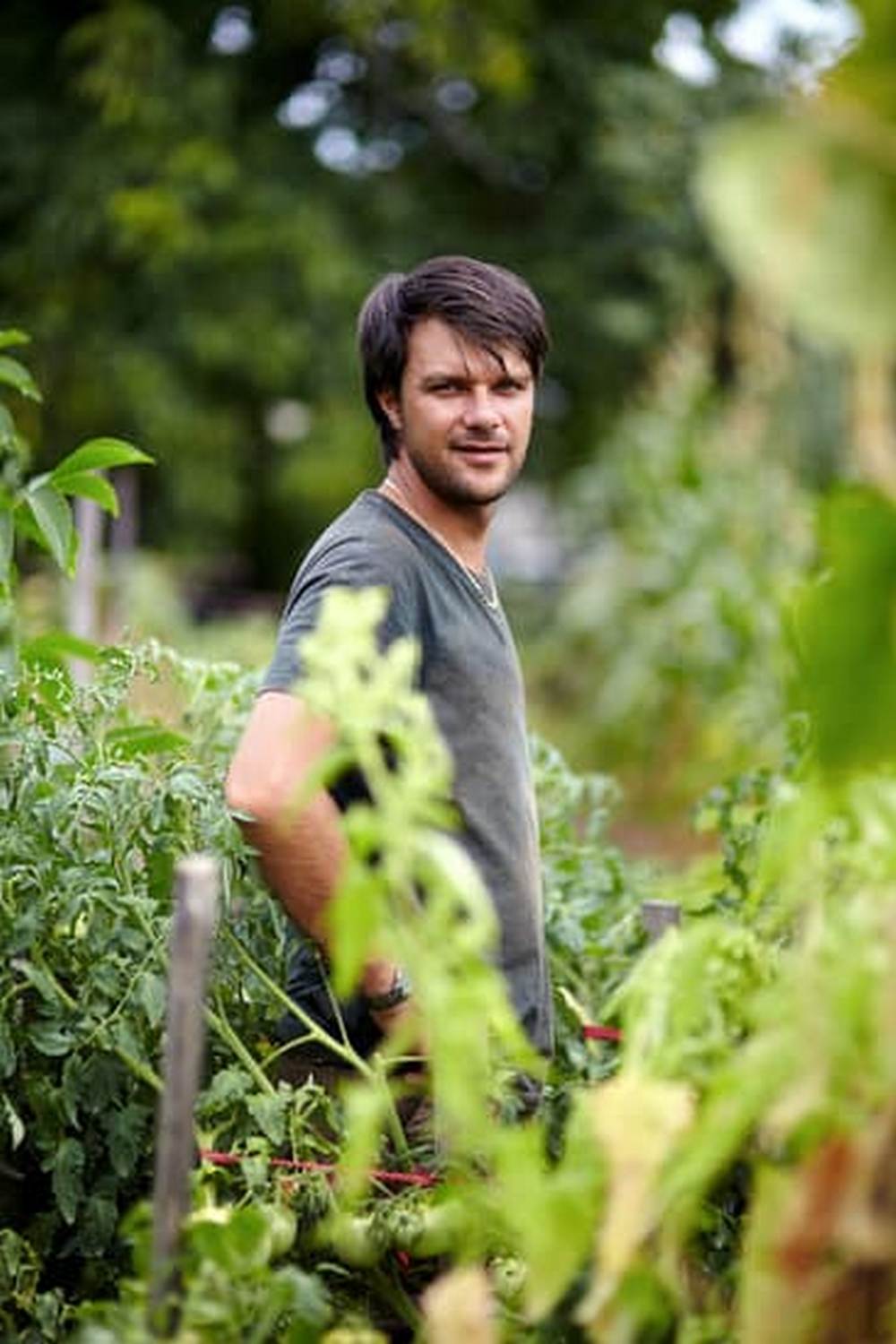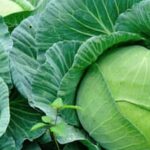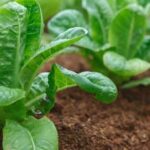Gardening vegetables by region in the US offers a unique opportunity for individuals to explore and embrace the diverse agricultural landscape that each region has to offer. From the Northeast to the West, understanding the specific growing conditions and seasons in different parts of the country is essential for a successful vegetable garden. By tailoring your gardening approach to your specific region, you can optimize production and enjoy a bountiful harvest of fresh, homegrown produce.
One of the key advantages of growing vegetables in different regions across the US is the ability to capitalize on varying climates and soil compositions. Each region presents its own set of challenges and opportunities when it comes to gardening, making it crucial to tailor your planting choices accordingly.
Whether you’re located in the sunny South or the cooler Northeast, there are certain vegetables that thrive best in each climate, giving you plenty of options to experiment with in your garden.
Understanding the different growing seasons in various US regions is paramount for planning a successful vegetable garden. By knowing when to plant, how long each crop takes to mature, and when to expect harvests, you can optimize your yields and ensure a steady supply of fresh produce throughout the season. This knowledge will also help you make informed decisions about crop rotation, succession planting, and other strategies that can enhance your gardening experience.
The Benefits of Growing Vegetables in Different Regions Across the US
Gardening vegetables by region in the US offers numerous benefits, including the ability to optimize each region’s unique growing conditions. By understanding the different climates, soil types, and growing seasons in various regions across the country, gardeners can make informed decisions about which vegetables to grow for optimal success.
One benefit of gardening vegetables in different regions is the opportunity to diversify your harvest throughout the year. Each region has its own distinct growing season, allowing gardeners to stagger their planting schedules to enjoy a continuous supply of fresh produce. For example, while gardeners in the Northeast may focus on cool-season crops like lettuce and kale in early spring, those in the Southern US can start planting warm-season favorites like tomatoes and peppers.
Another advantage of gardening vegetables by region in the US is the ability to capitalize on local flavors and culinary traditions. By choosing to grow vegetables that thrive in your specific region, you can explore unique varieties that are well-suited to your local climate and soil conditions. This not only enhances the taste and quality of your produce but also supports sustainable agriculture practices by reducing the need for long-distance transportation.
Moreover, gardening vegetables by region in the US fosters a sense of connection to your local environment and community. By engaging with regional gardening practices and sharing knowledge with fellow gardeners in your area, you can build a strong network of support and camaraderie. Whether you’re swapping seeds with neighbors or attending local gardening workshops, cultivating vegetables based on regional considerations creates a shared sense of pride and belonging among growers across the country.
- Benefits of Gardening Vegetables Across Different Regions:
- Diversification of harvest throughout the year
- Capitalizing on local flavors and culinary traditions
- Fostering a sense of connection to local environment and community
Understanding the Different Growing Seasons in Various US Regions
When it comes to gardening vegetables in the US, understanding the different growing seasons in various regions is crucial for a successful harvest. Each region in the US has its own unique climate and weather patterns, which directly impact the best times to plant and harvest certain vegetables. By knowing the specific growing seasons in your region, you can maximize your garden’s potential and yield.
Here is a breakdown of the different growing seasons in various US regions:
- Northeastern US: The Northeast experiences four distinct seasons, with cold winters and warm summers. Spring is typically from March to June, summer from June to September, fall from September to December, and winter from December to March. Cool-season crops like lettuce, spinach, and peas thrive in the spring and fall.
- Southern US: The Southern region enjoys a longer growing season due to its milder climate. Southern states experience hot summers and mild winters. The growing season extends from late February to early December, making it ideal for warm-season crops like tomatoes, peppers, and okra.
- Midwest: The Midwest has a mix of temperatures with hot summers and cold winters. The growing season typically runs from April to October. Cool-season crops like broccoli, carrots, and beets do well in the spring and fall, while warm-season crops like corn, tomatoes, and beans thrive in the summer.
Understanding the different growing seasons allows gardeners to plan their planting schedules accordingly for optimal growth and yield. By aligning your vegetable selections with your region’s specific growing season, you can ensure a successful harvest of fresh produce throughout the year. Whether you are gardening in the Northeastern US or Southern US or Midwest region, paying attention to these seasonal variations will help you make the most of your vegetable garden all year round.
Best Vegetables to Grow in the Northeastern US
The Northeastern US, with its diverse climate and varying growing seasons, offers a unique opportunity for gardeners to cultivate a wide range of vegetables. From the coastal areas of Maine to the mountains of Vermont and down to the urban gardens in New York, each region has its own specific set of vegetables that thrive in its particular conditions.
One of the best vegetables to grow in the Northeastern US is leafy greens such as kale, spinach, and lettuce. These cool-season crops do well in the region’s mild springs and falls, providing fresh greens for salads and cooking throughout much of the year. Root vegetables like carrots, beets, and radishes also excel in the Northeast due to its fertile soil and cooler temperatures.
Another popular vegetable choice for Northeastern gardeners is tomatoes. While they require plenty of sunlight and warmth to ripen fully, with careful planning and perhaps some protective covers during cooler temperatures, tomatoes can thrive in this region. Peas, beans, and squash are also great options for those looking to add variety to their Northeastern garden.
| Vegetable | Best Growing Season |
|---|---|
| Kale | Spring/Fall |
| Carrots | Spring/Fall |
| Tomatoes | Summer/Fall |
Considering the shorter growing season in the Northeast, it is essential for gardeners in this region to make use of every available window for planting. Starting seeds indoors or using cold frames can help extend the growing season for warm-weather crops. Additionally, amending the soil with compost and other organic materials can improve fertility and drainage, leading to healthier plants overall.
Ultimately, gardening vegetables in the Northeastern US requires attentiveness to local climate conditions, understanding of different varieties’ needs, and a willingness to adapt gardening practices based on changing weather patterns. With dedication and a bit of experimentation, gardeners in this region can enjoy a bountiful harvest of fresh vegetables throughout the year.
Top Vegetables to Cultivate in the Southern US
The Southern United States is known for its warm climate and long growing seasons, making it an ideal region for gardening vegetables. With the right knowledge about what thrives in this area, you can cultivate a bountiful harvest of fresh produce. Whether you are a seasoned gardener or just starting out, here are some top vegetables to consider growing in the Southern US.
Tomatoes
One of the most popular vegetables (technically a fruit) to grow in the Southern US is tomatoes. With ample sunshine and warmth, tomatoes thrive in this region. From cherry tomatoes to beefsteak varieties, there are endless options to choose from. Consider planting a mix of heirloom and hybrid varieties for a diverse selection of flavors and colors.
Okra
Another vegetable that does well in the Southern US is okra. This heat-loving plant produces tall stalks with vibrant green pods that are perfect for frying, stewing, or pickling. Okra is easy to grow and can withstand the hot temperatures common in this region. Make sure to provide support for the tall plants as they grow.
Peppers
Peppers, both sweet and hot varieties, are excellent choices for vegetable gardening in the Southern US. Bell peppers, jalapeños, habaneros, and more can be grown successfully in this region. Peppers thrive in the warm weather and can be harvested throughout the summer months. Consider planting a mix of different pepper types to add variety to your garden and spice up your meals.
By selecting these top vegetables to cultivate in the Southern US, you can enjoy a plentiful harvest of fresh produce throughout the growing season. Remember to consider factors such as soil preparation, watering needs, and pest control specific to your region to ensure gardening success. With some care and attention, your vegetable garden in the Southern US can flourish and provide you with homegrown goodness all year round.
Ideal Vegetables for Gardening in the Midwest
The Midwest region of the United States offers a unique climate and growing conditions for gardening vegetables. With its distinct seasons and fertile soil, this region provides ample opportunities for cultivating a wide variety of crops. From hearty root vegetables to leafy greens, the Midwest is a prime location for home gardeners to explore their green thumb. Let’s delve into some ideal vegetables to grow in the Midwest and tips for successfully nurturing them.
Root Vegetables
Root vegetables thrive in the cooler temperatures and rich soil of the Midwest. Vegetables like carrots, beets, radishes, and potatoes are well-suited for this region. These underground gems can withstand fluctuations in temperature and are perfect for harvesting in the fall when the weather starts to cool down.
Leafy Greens
Leafy greens such as lettuce, spinach, kale, and Swiss chard are excellent choices for Midwest gardeners. These crops can tolerate both cold and warm weather, making them versatile options throughout the growing season. With proper care and regular watering, you can enjoy a continuous harvest of fresh greens from your garden.
Squash and Pumpkins
Squash varieties like zucchini, butternut squash, and pumpkins also do well in the Midwest. These plants require warm temperatures to thrive but can withstand short periods of cooler weather. With their sprawling vines and vibrant fruits, squash and pumpkins can add color and flavor to your garden while thriving in the Midwest’s climate. Whether you have a spacious backyard or limited space for container gardening, these veggies can be grown successfully in the Midwest region with proper care.
Recommendations for Vegetable Gardening in the Western US
The Western US offers a unique landscape for gardening vegetables, characterized by diverse climates and terrain. When considering gardening in this region, it is vital to take into account the varying microclimates that exist due to the vast area covered. From the arid deserts of Arizona to the temperate coastal regions of California, each sub-region presents its own set of challenges and opportunities for vegetable cultivation.
One key aspect to keep in mind when planning a vegetable garden in the Western US is water conservation. Many areas in the West face water scarcity issues, so opting for drought-resistant vegetables can be a wise choice. Succulent vegetables like tomatoes, peppers, and zucchinis tend to thrive in these conditions. Additionally, incorporating mulching techniques can help retain soil moisture and reduce water evaporation.
In terms of specific recommendations for vegetable gardening in the Western US, some top choices include leafy greens like kale and spinach, root vegetables such as carrots and radishes, as well as legumes like beans and peas. These crops are not only well-suited to the region’s climate but also offer a wealth of nutrients for home consumption.
By selecting vegetables that are adapted to the Western US conditions, gardeners can increase their chances of success and enjoy a bountiful harvest throughout the growing season.
| Recommended Vegetables | Climate Suitability |
|---|---|
| Kale | Diverse climates from coastal to arid regions |
| Carrots | Thrives in well-drained soils with minimal watering requirements |
| Peas | Tolerates cooler temperatures found at higher elevations in the West |
Tips for Success
When it comes to gardening vegetables by region in the US, understanding soil preparation and climate considerations is crucial for a successful harvest. Different regions across the country have varying soil types, climates, and growing conditions that must be taken into account when planning your vegetable garden. By tailoring your soil preparation and gardening techniques to the specific needs of your region, you can optimize plant growth and yield.
In the Northeastern US, where temperatures can fluctuate drastically throughout the year, it is important to choose vegetables that are hardy and can withstand cold temperatures. Prior to planting, make sure to amend your soil with organic matter such as compost to improve drainage and fertility. Consider planting cool-season crops like kale, lettuce, and carrots in early spring or fall to take advantage of milder weather conditions.
In the Southern US, where hot and humid climates prevail, focus on selecting heat-tolerant vegetables that thrive in these conditions. Prepare your soil by incorporating organic materials to retain moisture and nutrients. Planting options like tomatoes, peppers, okra, and sweet potatoes are well-suited for the long growing season in this region. Additionally, consider using mulch to regulate soil temperature and prevent weed growth during the warmer months.
Resources and Tools for Regional Vegetable Gardening in the US
When it comes to gardening vegetables by region in the US, having the right resources and tools can make a significant difference in the success of your garden. One valuable resource for regional vegetable gardening is local agricultural extension services.
These services provide information specific to your area, including recommended varieties of vegetables, planting schedules, and pest management strategies tailored to your region. They can also help you with soil testing and offer advice on improving soil health based on your location.
Another essential tool for successful regional vegetable gardening is a good quality garden planner or journal. Keeping track of what you plant, when you plant it, and how it performs can help you learn from each season’s successes and challenges. This information is especially valuable when planning future gardens, as it allows you to make adjustments based on your region’s unique growing conditions.
Investing in appropriate gardening tools for your region can also improve your gardening experience. For example, if you live in a region with heavy clay soil, having a sturdy digging fork or broadfork can make preparing the soil easier.
If you are in an area prone to droughts, investing in drip irrigation systems or soaker hoses can help conserve water while keeping your plants healthy. By utilizing these resources and tools specifically tailored to regional vegetable gardening in the US, you can set yourself up for a successful and bountiful harvest year after year.
Conclusion
In conclusion, gardening vegetables by region in the US is not only a rewarding experience but also a way to embrace the diversity of climates and growing conditions across the country. From the Northeast to the Southern states, the Midwest, and the Western regions, each area presents unique opportunities for cultivating a wide variety of vegetables. By understanding the different growing seasons and recommended crops for each region, gardeners can make the most out of their gardening efforts.
One of the key benefits of regional vegetable gardening is the opportunity to enjoy fresh produce that is suited to local climates and soil conditions. By choosing vegetables that thrive in specific regions, gardeners can increase their chances of success and yield bountiful harvests. Additionally, regional vegetable gardening promotes sustainability by reducing the need for long-distance transportation of produce, thereby lowering carbon emissions and supporting local food systems.
As aspiring gardeners delve into the world of vegetable gardening by region in the US, it is essential to remember that each area has its own unique challenges and considerations. From soil preparation techniques to climate adjustments, adapting gardening practices to suit regional characteristics is crucial for success.
By utilizing resources and tools specifically tailored to each region, gardeners can enhance their skills and knowledge while reaping the benefits of a fruitful harvest. Overall, embracing the diversity of gardening vegetables across the US allows enthusiasts to explore new horizons in horticulture and connect with their local environment in a meaningful way.
Frequently Asked Questions
What Are the Zones for Gardening in the US?
The zones for gardening in the US are divided according to the USDA Plant Hardiness Zone Map, which categorizes regions based on their average annual minimum winter temperature. These zones help gardeners select plants that are suitable for their specific climate.
What Is the Best State for Vegetable Gardening?
Finding the best state for vegetable gardening depends on various factors such as climate, soil quality, and available sunlight. States like California, Texas, and Florida are known for their longer growing seasons and diverse crops that thrive in their climates.
Where Is the Best Place to Grow Vegetables in the United States?
The best place to grow vegetables in the United States can vary depending on personal preferences and specific needs. However, states like California, Oregon, and Washington offer ideal conditions with mild climates, ample sunshine, and fertile soil for successful vegetable gardening projects.

If you’re looking to get into vegetable gardening, or are just looking for some tips on how to make your current garden better, then you’ve come to the right place! My name is Ethel and I have been gardening for years. In this blog, I’m going to share with you some of my best tips on how to create a successful vegetable garden.





